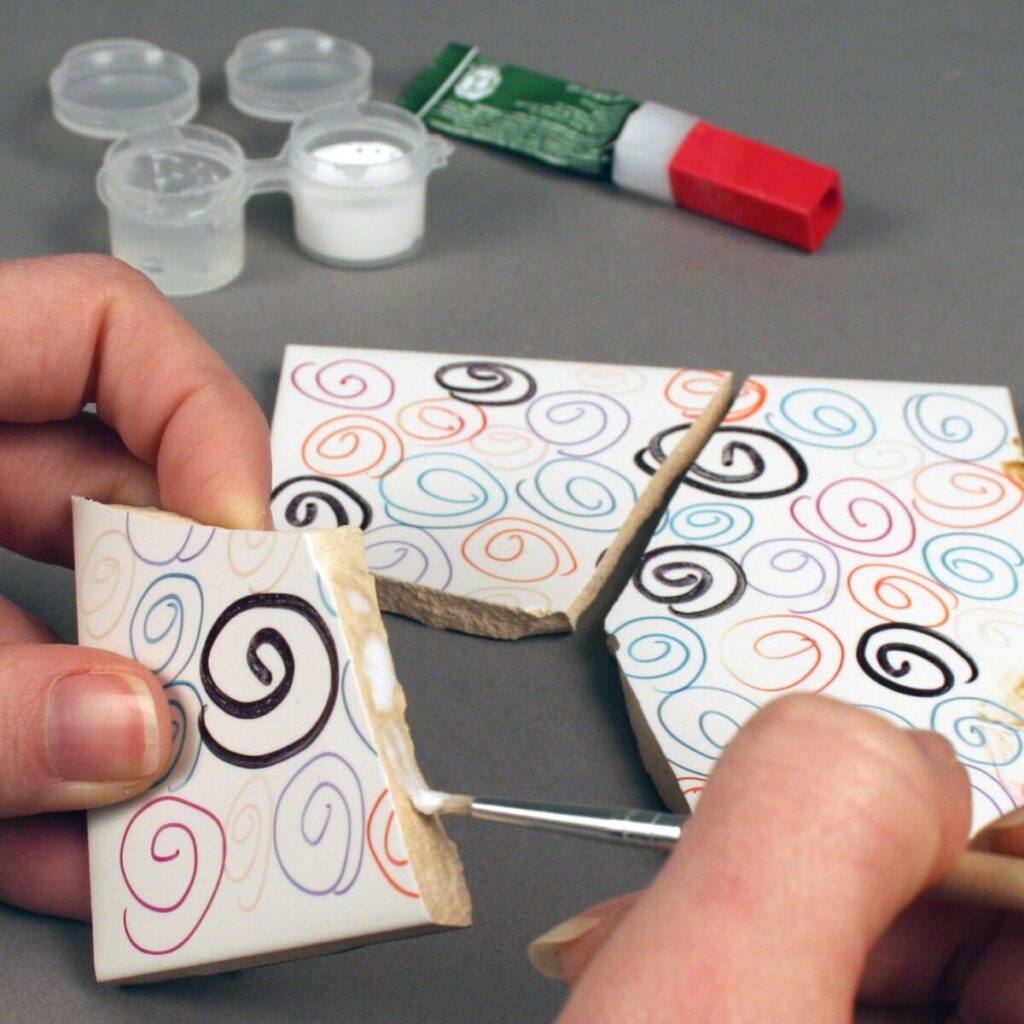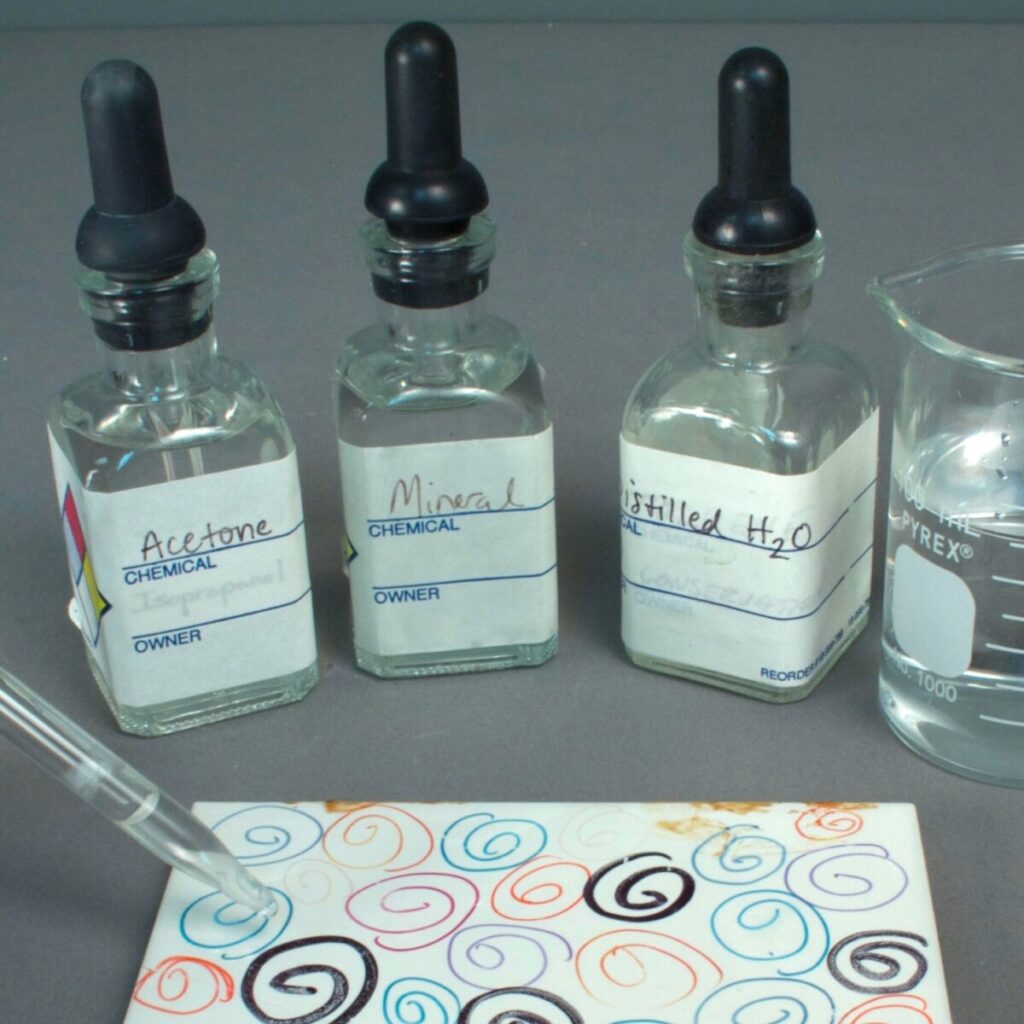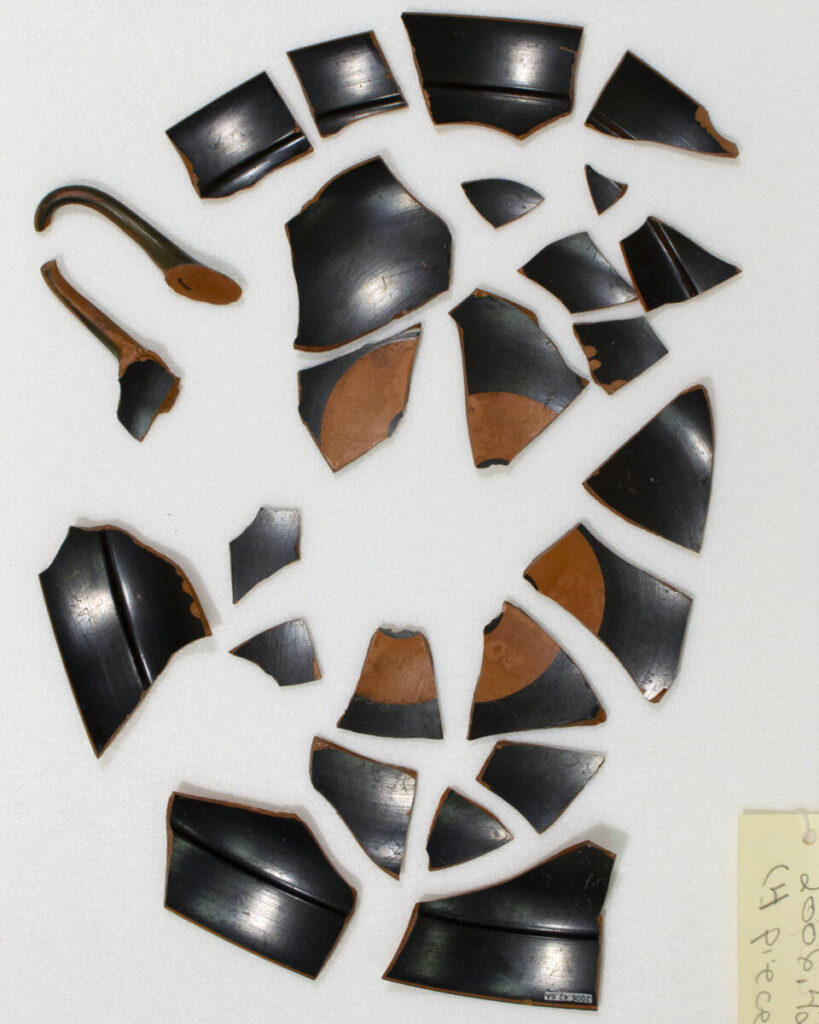
The adhesives used to repair broken objects sometimes need to be removed by dissolving them in the appropriate solvent. This lab activity tests the solubility of several household adhesives and considers factors that influence solubility.
Adhesives are used to hold all kinds of items and materials together. Objects may be constructed from multiple parts attached by adhesive. Broken fragments may also be re- assembled with adhesives. Adhesives can be natural or synthetic and have distinct properties including strength, viscosity, and solubility. In the conservation repair of art objects, the adhesive must be functional as well as reversible, allowing joins to be altered in the future. It is also often necessary to take apart repaired fragments that have been joined in the past. It is therefore important to conduct solubility tests in order to know which solvents will dissolve the adhesive without altering the original object or materials. In this activity, students will use an adhesive to repair a broken tile, and will then determine which solvent(s) can be used to take it apart.
Objectives:
Define solubility
Demonstrate the effect of temperature on solubility
- Demonstrate the effect of surface area on solubility
Georgia Performance Standards:
SC7. Students will characterize the properties that describe solutions and the nature of acids and bases.
a. Explain the process of dissolving in terms of solute/solvent interactions:
• Observe factors that effect the rate at which a solute dissolves in a specific solvent



